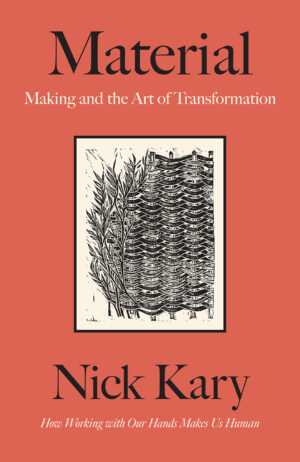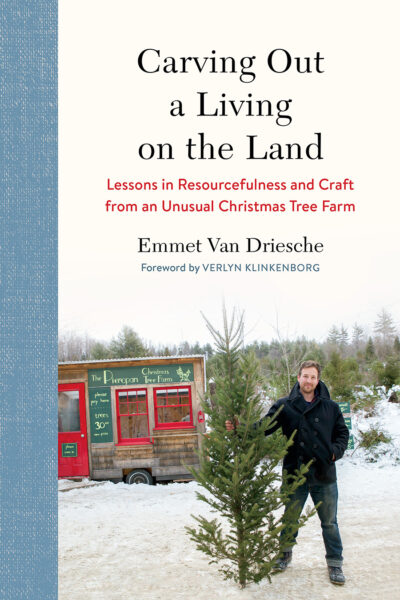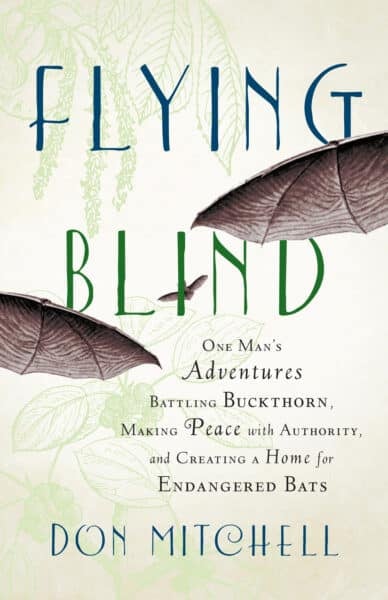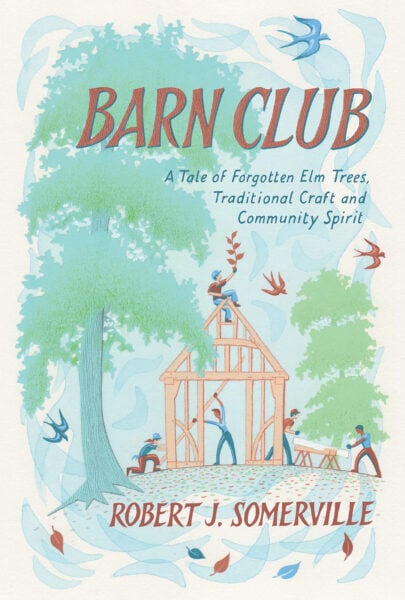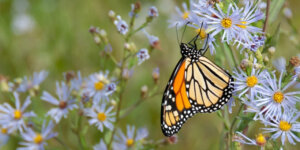The Evolution of Tools: Rock, Paper, Scissors
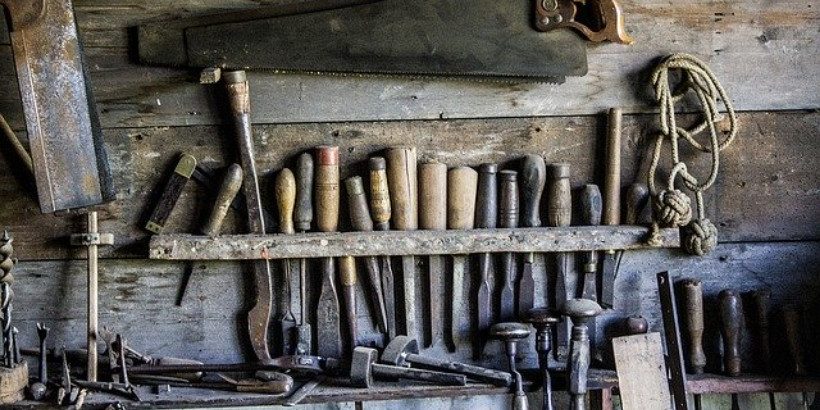
We’ve all played Rock, Paper, Scissors; whether it’s to decide who’s goes first, who’s doing the dishes, or simply a way to pass the time– we all know the rules. While it’s a child’s game on the surface level, Nick Kary gleans a deeper meaning to this game of tools.
The following excerpt is from Material by Nick Kary. It has been adapted for the web.
Used by kids to mimic gun or sword, used to hit balls to test prowess or raised whimsically as a spear, in play the stick is a symbol of power separated by a gossamer-thin veil from the darker side of adult behaviour. It is often associated with masculinity: the ‘boyness’ of boys, and how they ‘naturally’ gravitate to certain forms of play. Stick, bat, weapon and stone, ball, missile are two sequences that seem difficult to escape. Inanimate objects held in human hands become either toy or weapon. This is often used as a shorthand for human development, the idea that playground behaviour is being practised in preparation for the world outside the playground.
The premise is that the stick and stone were the first interface of our ancestors, the way that earliest Homo sapiens differentiated themselves from the rest of the animal world. So the story goes that inanimate objects became weapons with which to exert power over others. Humanity’s mastery of them has become increasingly refined so that these objects no longer look like the sticks and stones that were originally picked and lightly fashioned from the primeval forest floor. In only a few hundred years, they have become extraordinarily sophisticated weapons of power with great destructive potential.
Tools have a role within this overarching narrative, too, in the articulation of stick and stone, of spear and missile for hunting, driven by the hard edge of resilient materials.
We have all played rock paper scissors, I imagine. I was always so surprised that paper had the power over the rock that it did. There was something poetic about this, something that transcended so much of what was otherwise fundamental thinking. That a material so thin and delicate could overwhelm something so resilient, heavy and powerful as a rock never failed to bewilder and entrance me. The three protagonists in the drama are the hard and heavy, the soft and expansive, and the sharp. So scissors cut paper, which when uncut smothers rock and takes away its power.
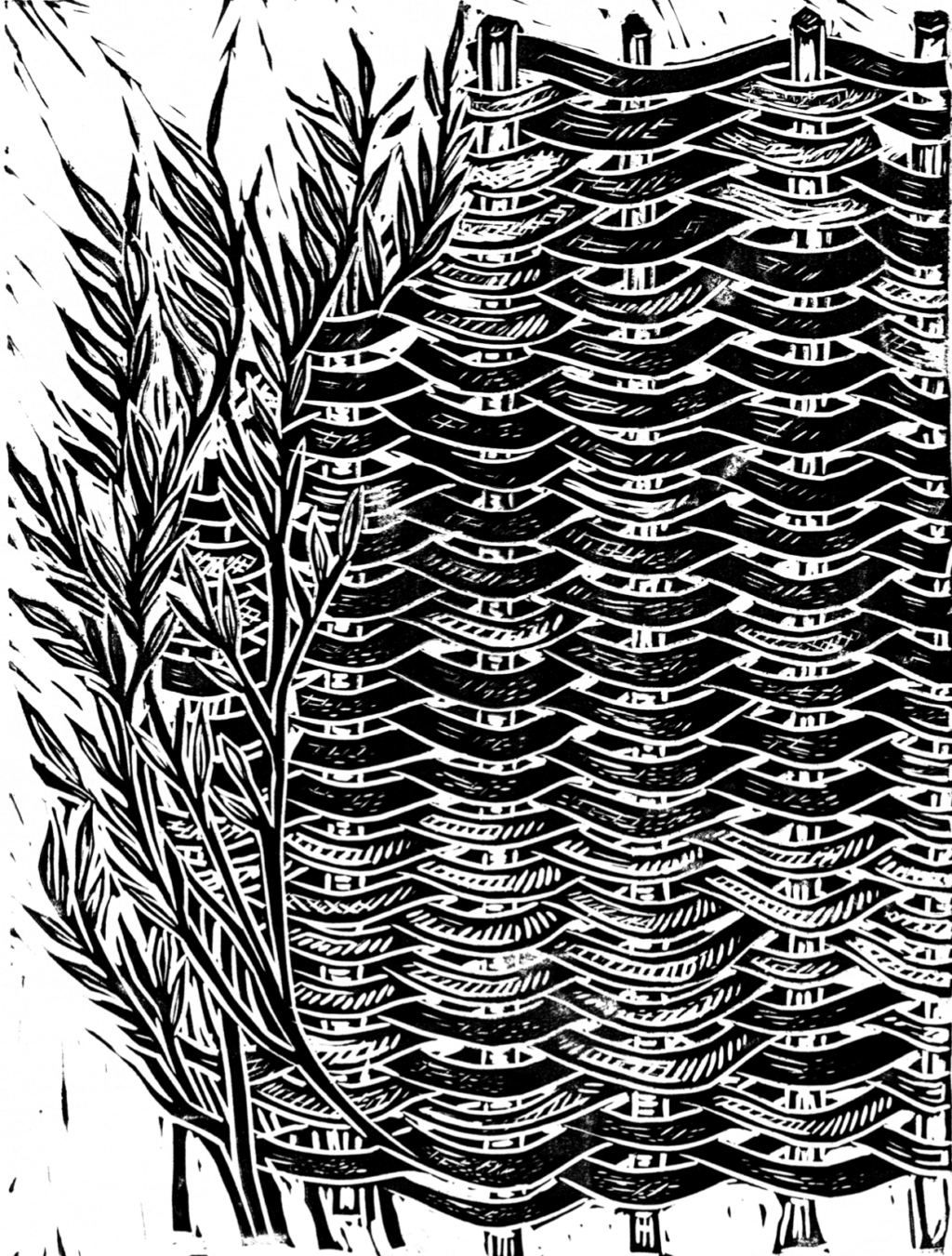
Illustration by Lou Tonkin
It seems that they are in perfect order for the timescale of human evolution. The stone occurring in its raw form, lying cracked, worn and separated on the ground was picked and roughly fashioned with other rocks. It could be used to crudely pound or shear fibre from wood, bark, grasses or skins. These fibres – woven, pounded, saturated or heated – were used to fashion clothing or baskets or parchment-like sheets. The hard helped create the soft, and the soft helped contain a life, to protect and keep warm or to collect food and radically multiply the holding potential of the hands.
The scissors of the game are clearly a very late development of the tool, a mechanical adaptation of the steel blade that has been around for only a few thousand years. Yet its mechanistic imperative, or at least its antecedent – the knife edge, arrow head, sharp point hafted to a stick – has driven much of our thinking.
There is an essay by Ursula K. Le Guin called ‘The Carrier Bag Theory of Fiction’. Her theories tie in with my own musings, and help create a more rounded vision of tool development and use, and of the imperatives that may have driven our relationships with making. In it she imagines the seductiveness of the stick and stone narrative, of the hero prototypes based around meat eating and hunting practices. She seeks to challenge how prevailing narratives end up dictating regular patterns of consciousness and of fictional and factual storytelling. Working on established research that between 65 and 80 percent of our ancestors’ diet was vegetable-based, she imagines the bag as great an imperative as the spear, or greater. That the hunt for vegetable sustenance and the development of humanity were contained within the container that contained the fruits of the day’s labour.
Her main point, though, is how the acceptance of a particular narrative can then affect all the stories we tell. By telling stories based on the assumption that it was the spear and not the carrier bag by which human development was articulated, we set in motion later stories coming from an aggression-centric, male-centric, meat-centric perspective. How different would our narratives be had they been based on the idea of the bag or basket, of holding, of containment and of the different relationships required with nature that arose. As far as I know there are no cave paintings elevating the basket or woven cloth, but there is this idea that woven plant fibre has a strength, resilience and contribution far greater than the disappearance of it from the historical archive would allow us to believe. There is relatively little archaeological evidence of woven plant fibre in comparison with the extensive catalogue of stone and metal weapons and tools.
Recommended Reads
Recent Articles
For too long, bugs have had a negative connotation associated with them. But what if we took the time to observe the benefits of insects? It’s time to rebug our gardens, lawns, and parks! The following is an excerpt from Rebugging the Planet by Vicki Hird. It has been adapted for the web. Adding Bugs:…
Read MoreAsparagus is a delicious vegetable with a layered history. How did this aspiring spear make its way from growing in the wild to appearing on our plates? The following is an excerpt from the The Seed Detective by Adam Alexander. It has been adapted for the web. “Nature gives us the key to every secret…
Read MoreChances are, you’ve seen cattails growing on the edge of your local lake or stream at least once or twice. Instead of just passing these plants, try foraging for and cooking them to create delicious seasonal dishes! The following excerpt is from The New Wildcrafted Cuisine by Pascal Baudar. It has been adapted for the…
Read MoreGarlic mustard: while known as “invasive,” this plant can be consumed in its entirety and has great nutritional value. Plus, the garlic-flavor is a perfect addition to any recipe that calls for mustard! The following are excerpts from Beyond the War on Invasive Species by Tao Orion and The Wild Wisdom of Weeds by Katrina…
Read MorePeregrine falcons, while known as predators, are essential to our environment. These stunning birds have a rich history, an interesting present, and an uncertain future. The following is an excerpt from Feather Trails by Sophie A. H. Osborn. It has been adapted for the web. Who Are Peregrine Falcons? Though relatively uncommon wherever it occurs,…
Read More

